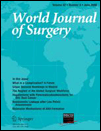Incidence and Risk Factors for Hospital-acquired Pneumonia After Surgery for Gastric Cancer: Results of Prospective Surveillance
Additional participating investigators are listed at the end of the article.
Abstract
Background
Postoperative hospital-acquired pneumonia (HAP) is recognized as a major risk associated with surgery. Although upper abdominal surgery is known to have the highest incidence of postoperative HAP, little is known about the risk factors that contribute to HAP after gastric cancer surgery. The aim of this study was to determine the incidence and risk factors for HAP after elective surgery for gastric cancer.
Methods
We conducted prospective surveillance of all elective gastric resections by surgeons in ten affiliated hospitals, including ours, from May 2001 to May 2005. The outcome of interest was postoperative HAP. Univariate and multivariate analyses were performed to determine the predictive significance of variables in gastric cancer surgery.
Results
A total of 529 patients undergoing elective operations for gastric cancer were admitted to the program. Postoperative HAP was identified in 20 patients (3.6%). Univariate and multivariate analyses showed that male gender and intra- and/or postoperative blood transfusion were independently predictive of postoperative HAP.
Conclusions
Male gender and intra- and/or postoperative blood transfusion were independent risk factors for the development of HAP after elective resection of gastric cancer. Surgeons should keep these risk factors in mind when managing postoperative patients.




